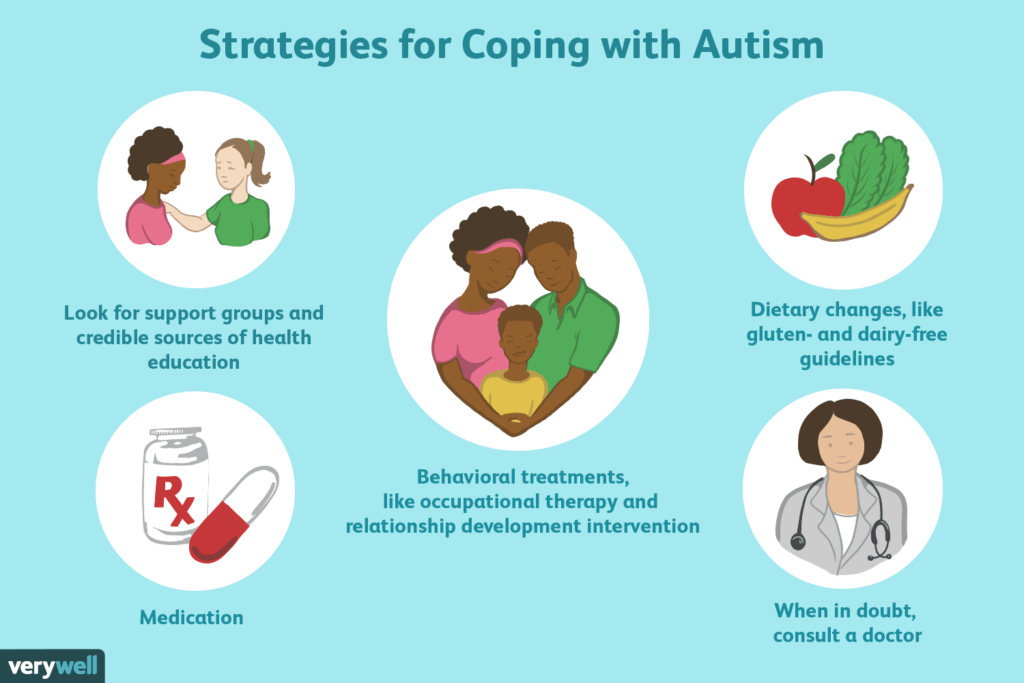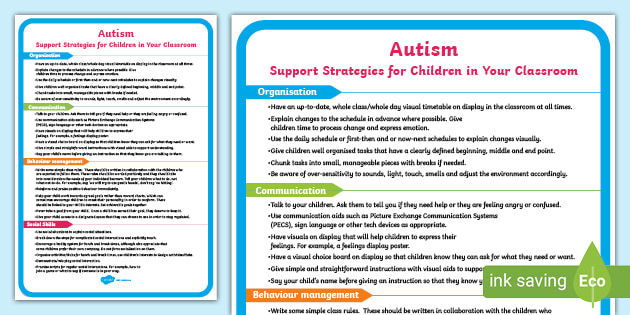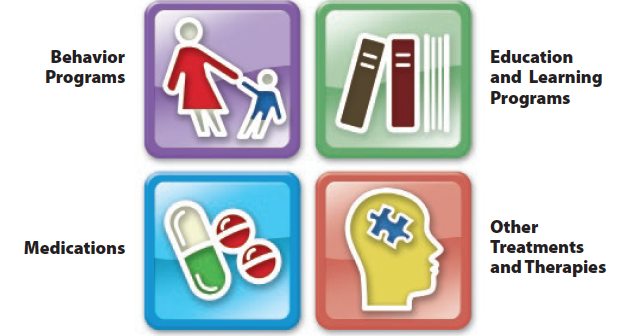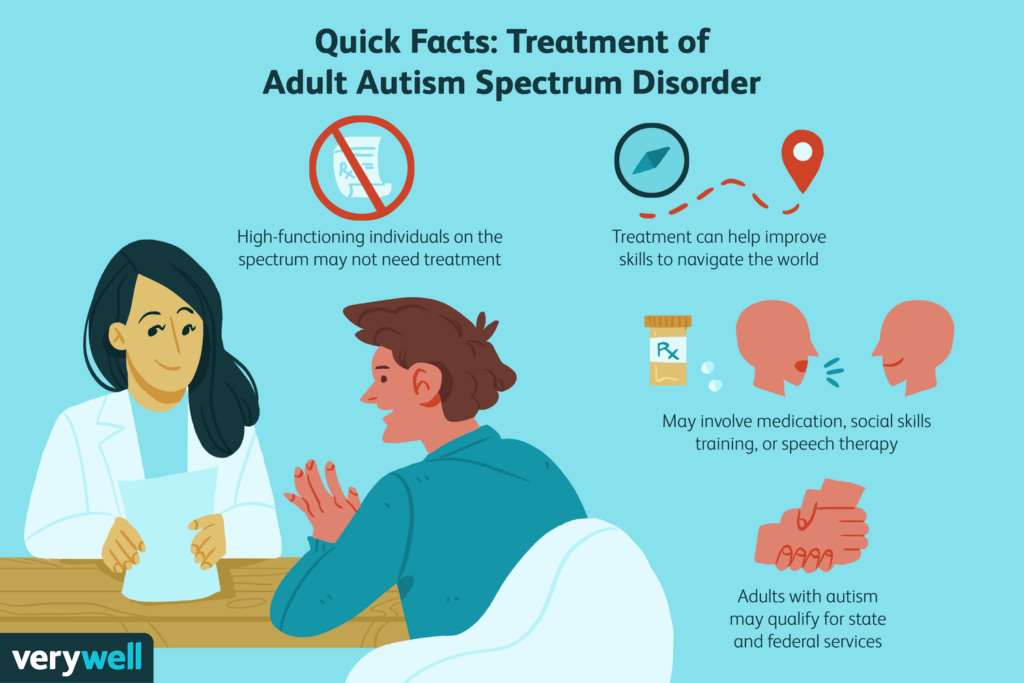Living with Autism Spectrum Disorder (ASD) can present unique challenges, both for individuals diagnosed with the disorder and their loved ones. However, with the right strategies in place, managing ASD can become a much smoother experience. In this article, you will discover a range of effective strategies that can help navigate the complexities of ASD, allowing you to foster a supportive and inclusive environment, promote successful communication, and enhance overall well-being for individuals with Autism Spectrum Disorder.

Understanding Autistic Spectrum Disorder (ASD)
Autistic Spectrum Disorder (ASD) is a neurodevelopmental disorder that affects how individuals perceive and interact with the world around them. It is characterized by difficulties in social communication and interaction, as well as restricted and repetitive patterns of behavior, interests, or activities. Understanding the characteristics of ASD is crucial for providing appropriate support and intervention to individuals on the autism spectrum.
Characteristics of ASD
People with ASD may have difficulties with social interactions, such as making eye contact, understanding social cues, and maintaining conversations. They may also exhibit repetitive behaviors, have intense and narrow interests, and display sensory sensitivities. Additionally, individuals with ASD may struggle with transitions, changes in routines, and difficulties in expressing and processing emotions.
Types of ASD
ASD is a spectrum disorder, which means that individuals can experience a wide range of symptoms and levels of functioning. The severity of symptoms can vary from mild to severe, and individuals may also have additional conditions or disabilities. The most commonly recognized types of ASD are autistic disorder (classic autism), Asperger’s syndrome, and pervasive developmental disorder not otherwise specified (PDD-NOS).
Prevalence of ASD
The prevalence of ASD has been increasing over the years, with recent studies estimating that approximately 1 in 54 children in the United States are diagnosed with ASD. It is more common in boys than girls, with a ratio of approximately 4:1. While the exact cause of ASD is still unknown, it is believed to be influenced by a combination of genetic and environmental factors.
Early Intervention and Diagnosis
Early intervention plays a crucial role in supporting individuals with ASD and promoting positive developmental outcomes. Recognizing the signs and symptoms of ASD, and obtaining a timely diagnosis, is essential for accessing the necessary interventions and services.
Signs and Symptoms of ASD
Early signs of ASD can often be observed in infancy, with delays or differences in social communication and interaction. These may include limited eye contact, delayed or unusual speech development, difficulties with joint attention, lack of interest in social interactions, and repetitive behaviors. It is important to consult with a healthcare professional if you have concerns about your child’s development.
Screening and Assessment
Screening tools are often used to identify individuals who may be at risk for ASD. These tools assess various areas of development and can help identify red flags for further assessment. Diagnostic evaluation may involve a multidisciplinary team of professionals, including psychologists, speech-language pathologists, and occupational therapists. The evaluation process typically includes thorough observations, interviews with caregivers, and standardized assessments.
Importance of Early Intervention
Early intervention is critical as it provides an opportunity to address areas of challenge and promote developmental progress. Research has shown that early intervention can lead to improved outcomes in areas such as communication skills, social interactions, and adaptive behaviors. By starting intervention as early as possible, individuals with ASD can have better chances of reaching their full potential.

Creating a Supportive Environment
Creating a supportive environment is essential in helping individuals with ASD thrive and reach their goals. By implementing strategies that are tailored to their unique needs, you can create a structured and predictable environment that promotes a sense of security and reduces anxiety.
Visual Supports
Visual supports, such as visual schedules, social stories, and visual cues, can be highly beneficial for individuals with ASD. These visual tools help provide clear and concrete information about expectations, routines, and upcoming events, which can reduce stress and increase understanding. Visual supports can be used at home, in school, or in community settings to enhance communication and promote independence.
Structured Schedule
Establishing a structured schedule can provide predictability and routine for individuals with ASD. A visual or written schedule that outlines the daily activities and transitions can help reduce anxiety and support understanding. It is important to ensure that the schedule is consistent and flexible enough to accommodate any potential changes or unexpected events.
Sensory Regulation
Many individuals with ASD have sensory sensitivities and may become overwhelmed or anxious in certain environments. Creating a sensory-friendly environment by managing lighting, noise levels, and tactile experiences can help individuals regulate their sensory sensitivities. Providing sensory breaks or access to sensory tools, such as weighted blankets or fidget toys, can also help individuals self-regulate and maintain a calm state.
Communication Strategies
Effective communication strategies are essential in supporting individuals with ASD in their social interactions and interactions with the world around them. By utilizing visual communication systems, social stories, and augmentative and alternative communication (AAC) methods, you can enhance communication and understanding.
Visual Communication Systems
Visual communication systems, such as Picture Exchange Communication System (PECS) or communication boards, can help individuals with ASD express their needs, wants, and thoughts. These systems use visual symbols or icons to represent objects, actions, or concepts, allowing individuals to communicate their messages effectively. Visual communication systems can be used as a standalone method or as a supplement to verbal communication.
Use of Social Stories
Social stories are personalized narratives that provide individuals with ASD with information about social situations, expected behaviors, and appropriate responses. These stories can be used to teach social skills, promote understanding of social expectations, and support individuals in navigating social interactions. They are particularly beneficial in preparing individuals for new or challenging situations and can help reduce anxiety and increase confidence.
Augmentative and Alternative Communication (AAC)
For individuals who have limited verbal communication abilities, augmentative and alternative communication (AAC) methods can be invaluable. AAC encompasses various tools and strategies, such as sign language, communication devices, or mobile apps, to support individuals in expressing their needs and thoughts. Implementing AAC systems can help individuals with ASD communicate more effectively, enhance their independence, and participate more actively in social interactions.

Social Skills Development
Developing social skills is a crucial aspect of supporting individuals with ASD in their social interactions and relationships. By understanding and expressing emotions, building peer relationships, and teaching conversation skills, individuals can develop vital social competencies.
Understanding and Expressing Emotions
Individuals with ASD may face challenges in understanding and expressing their emotions. Teaching individuals to recognize and label their emotions, as well as providing strategies for emotional regulation, can help them navigate their feelings more effectively. This can involve using visual supports, social stories, and role-playing to develop emotional awareness and expression skills.
Building Peer Relationships
Helping individuals with ASD build meaningful peer relationships is important for their social development. This can involve arranging structured social opportunities, such as playdates or social groups, where individuals can practice social skills in a supportive environment. Coaching and modeling appropriate social behaviors and providing opportunities for joint activities and shared interests can facilitate the development of friendships and positive social interactions.
Teaching Conversation Skills
Many individuals with ASD struggle with initiating and maintaining conversations. Teaching conversation skills, such as turn-taking, listening, and topic maintenance, can help individuals engage in more successful and meaningful social interactions. Strategies may include using visual supports to guide conversation structure, practicing scripts or social scripts, and providing direct instruction and feedback on social communication skills.
Behavior Management Techniques
Effective behavior management techniques can help individuals with ASD develop appropriate behaviors, reduce challenging behaviors, and enhance their overall functioning. By utilizing positive reinforcement, visual cues, and implementing tailored behavior plans, individuals can learn to navigate their environments more effectively.
Positive Reinforcement
Positive reinforcement involves providing rewards or incentives to encourage desired behaviors. It is essential to identify and utilize preferred reinforcers that are motivating and meaningful to individuals with ASD. By consistently pairing desired behaviors with positive consequences, individuals are encouraged to repeat those behaviors. This approach focuses on building skills and understanding, rather than simply punishing unwanted behaviors.
Use of Visual Cues
Visual cues, such as visual schedules or visual reminders, can be used to support individuals with ASD in understanding and following rules, expectations, or routines. These visual cues provide clear, tangible cues that help individuals navigate their environment and facilitate appropriate behaviors. Visual cues can also be helpful in redirecting or diffusing challenging behaviors by reminding individuals of alternative, more appropriate options.
Implementing a Behavior Plan
For individuals with more complex behavioral challenges, implementing a behavior plan can be beneficial. A behavior plan outlines specific strategies and techniques to address challenging behaviors, and should be developed in collaboration with professionals who have expertise in ASD and behavior management. The plan may include proactive strategies to prevent challenging behaviors, as well as strategies for managing and de-escalating challenging situations.

Educational Strategies
Education plays a crucial role in supporting the learning and development of individuals with ASD. By utilizing individualized education programs (IEP), structured teaching methods, and inclusive classroom practices, individuals can receive an education that meets their unique needs.
Individualized Education Program (IEP)
An IEP is a legally binding document that outlines the specific educational goals, accommodations, and services for a student with special needs, including ASD. The IEP is developed in collaboration with parents, teachers, and other professionals, and provides a personalized roadmap for an individual’s education. It ensures that educational interventions and supports are tailored to their specific strengths, challenges, and learning styles.
Structured Teaching Methods
Structured teaching methods, such as the TEACCH (Treatment and Education of Autistic and related Communication-handicapped Children) approach, are designed to support individuals with ASD in learning and organizing information. These methods emphasize the use of visual cues, structured schedules, and individualized work systems to promote understanding and independence. Structured teaching methods provide a predictable and organized learning environment that can enhance engagement and learning outcomes.
Inclusive Classroom Practices
Inclusion in mainstream classrooms can have significant benefits for individuals with ASD, promoting socialization, and providing opportunities for academic growth. Inclusive classroom practices involve adapting and modifying the curriculum, environment, and teaching strategies to meet the needs of diverse learners. Collaboration between general education teachers, special education teachers, and support professionals is essential in creating an inclusive learning environment and ensuring the success of individuals with ASD.
Family Support and Advocacy
Supporting families and advocating for individuals with ASD is crucial in ensuring their well-being and access to necessary resources. By accessing community resources, participating in support groups and therapy, and advocating for individuals with ASD, families can navigate the challenges of ASD more effectively.
Accessing Community Resources
There are numerous community resources available to support individuals with ASD and their families. These resources may include early intervention programs, specialized schools or classrooms, therapy services, respite care, recreational activities, and support networks. It is important for families to research and connect with local organizations or agencies that can provide guidance, information, and assistance in accessing these resources.
Support Groups and Therapy
Participating in support groups or therapy can be beneficial for individuals with ASD and their families. Support groups provide a safe space for sharing experiences, gaining knowledge, and receiving emotional support from others who are facing similar challenges. Therapy, such as behavioral therapy or speech therapy, can help individuals with ASD develop essential skills and cope with specific challenges. It is important for families to explore and engage in these resources to receive additional support and guidance.
Advocacy for Individuals with ASD
Advocacy plays a vital role in promoting the rights and well-being of individuals with ASD. Families can become advocates for their loved ones by actively participating in individualized education program (IEP) meetings, engaging with school administrators and teachers, and pushing for inclusive and appropriate services. Additionally, advocating for policy changes, raising awareness in the community, and promoting acceptance and inclusion can help create a more supportive and inclusive society for individuals with ASD.

Transition Planning
Transition planning is essential in preparing individuals with ASD for various life transitions, such as transitioning from early intervention to school, from school to post-secondary education or employment, or from pediatric care to adult services. By preparing for transitions, developing independence skills, and providing post-transition support, individuals can navigate these changes more effectively.
Preparing for Transitions
Preparing for transitions involves proactive planning and preparation to ensure a smooth transition. This may include visiting new environments, meeting new teachers or professionals, and gradually introducing new routines or expectations. Visual supports, such as social stories or visual schedules, can also be helpful in preparing individuals for upcoming transitions and alleviating anxiety.
Developing Independence Skills
Independence skills play a crucial role in enabling individuals with ASD to navigate various aspects of their lives. Teaching practical skills, such as self-care, daily living skills, and problem-solving abilities, can empower individuals to become more self-sufficient. Incorporating these skills into the daily routine and providing opportunities for practice and reinforcement can facilitate the development of independence.
Post-Transition Support
Post-transition support ensures that individuals with ASD continue to receive the necessary assistance and services in their new environment. This may involve ongoing communication and collaboration between professionals, ensuring that individuals have access to necessary accommodations or supports, and monitoring their well-being and progress. Post-transition support can help individuals adapt to their new environment and continue to thrive.
Promoting Health and Well-being
Promoting the health and well-being of individuals with ASD involves addressing their physical, nutritional, and emotional needs. By incorporating physical exercise and sensory integration activities, considering dietary considerations, and implementing emotional regulation techniques, individuals can maintain optimal health and well-being.
Physical Exercise and Sensory Integration
Regular physical exercise is important for individuals with ASD as it can help improve physical fitness, reduce anxiety, improve sleep patterns, and enhance overall well-being. Engaging in activities that involve sensory integration, such as swimming, dancing, or playing on a playground, can also provide opportunities for sensory regulation and promote a sense of calmness.
Nutrition and Dietary Considerations
Considering dietary considerations, such as food preferences, allergies, and sensitivities, can contribute to the overall health and well-being of individuals with ASD. While there is no specific diet that has been proven to treat or cure ASD, some individuals may benefit from dietary interventions, such as a gluten-free or casein-free diet. Collaborating with healthcare professionals and nutritionists can help determine appropriate dietary considerations for each individual.
Emotional Regulation Techniques
Supporting individuals with ASD in developing emotional regulation techniques can help them navigate and cope with emotional challenges effectively. Techniques such as deep breathing exercises, mindfulness activities, sensory strategies, or engaging in calming activities, can help individuals regulate their emotions and maintain a balanced emotional state. Providing a supportive and understanding environment where individuals feel safe expressing their emotions can also contribute to emotional well-being.
In conclusion, understanding and supporting individuals with ASD requires a holistic approach that encompasses various domains of their lives. By recognizing the characteristics of ASD, providing early intervention and diagnosis, creating a supportive environment, using effective communication strategies, promoting social skills development, implementing behavior management techniques, utilizing educational strategies, offering family support and advocacy, planning for transitions, and promoting health and well-being, individuals with ASD can receive the necessary support and opportunities to reach their full potential.